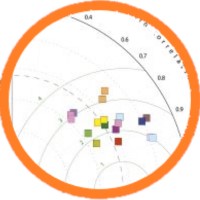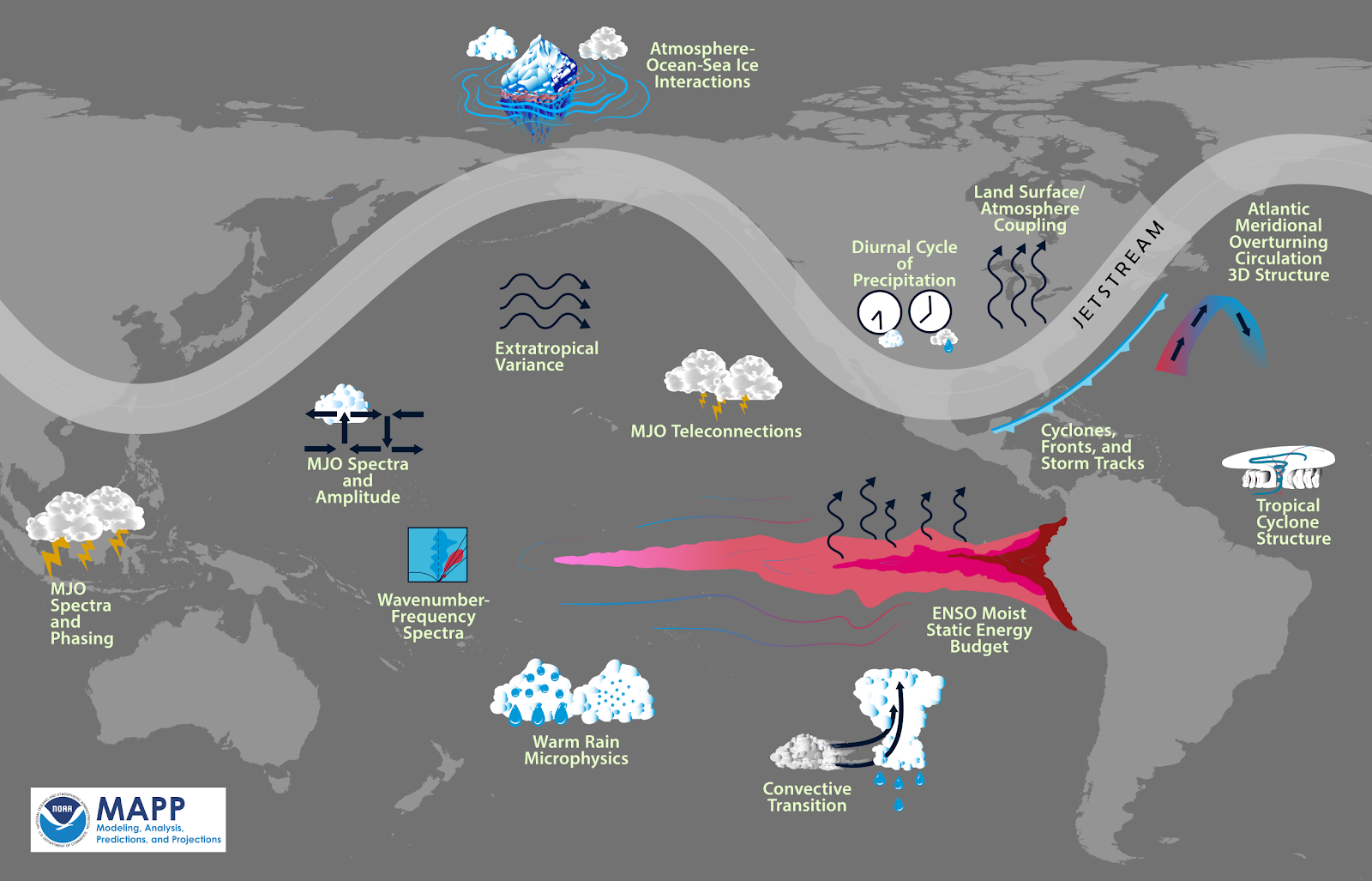Climate and Earth System Model Development


Climate models are essential to providing more accurate simulations of present climate and more credible and reliable predictions and projections of future climates at increasingly high resolution. Because models provide our only insight into how the Earth system will change in the future, improving current modeling and prediction capabilities is crucial to NOAA’s mission to respond to the societal need to better predict and project climate variability, particularly impacts on hydroclimate (droughts and floods) and impacts on marine ecosystems and coastal regions, which NOAA has a mission to manage and protect. Meeting this demand requires that progress in model development accelerate. We are supporting research to meet recommendations and research needs identified by NOAA laboratories and centers, the research community and organizations like WCRP/CLIVAR, and various studies and reports including the 2012 National Strategy for Advancing Climate Modeling, the Fourth National Climate Assessment, and the Intergovernmental Panel on Climate Change Reports.
MAPP Program investments in climate and Earth System model development include:
- State-of-the-art climate and Earth System model evaluation leveraging on the Coupled Model Intercomparison Project (CMIP) Experiments. This includes research done as part of the MAPP CMIP5 Task Force (projects ran FY11-FY13), the MAPP Model Diagnostics Task Force, and the MAPP CMIP6 Task Force.


- Climate Process and Modeling Teams (CPTs for short; for more information visit https://usclivar.org/climate-process-teams) that bring together field experimentalists and remote sensing experts, process modelers, and global-scale modelers to tackle the most persistent and vexing problems in how global models represent key processes. Over time, MAPP and its partners have funded several CPTs:
- FY13 – FY15, MAPP funded two CPTs focused on modeling of clouds and the atmospheric boundary layer as part of the NOAA Climate Test Bed.
- FY13-FY15, MAPP funded a CPT focused on ice sheet processes which led to improvements in GFDL modeling capabilities.
- For FY19, MAPP and DOE jointly selected and funded with NASA’s participation, two CPTs focusing on land processes.
In the past, the MAPP Program supported activities to develop operational seasonal forecasting systems including models and data assimilation techniques:
- Research as part of MAPP-Climate Test Bed partnership to test and evaluate research advances for improved NOAA operational climate modeling.
- The Climate Model Development Task Force is an initiative of NOAA’s MAPP Program in partnership with the Climate Test Bed to achieve significant advances in NOAA’s climate models in support of improved predictions. The Task Force brings together scientists from universities, research laboratories, and NOAA’s centers and labs and builds-on MAPP funded research activities. It is envisioned that the Task Force will work in synergy with internal climate model development efforts at NOAA”s research laboratories and centers and will emphasize research contributing to the development of the next-generation operational climate forecasting system via Climate Test Bed activities.


